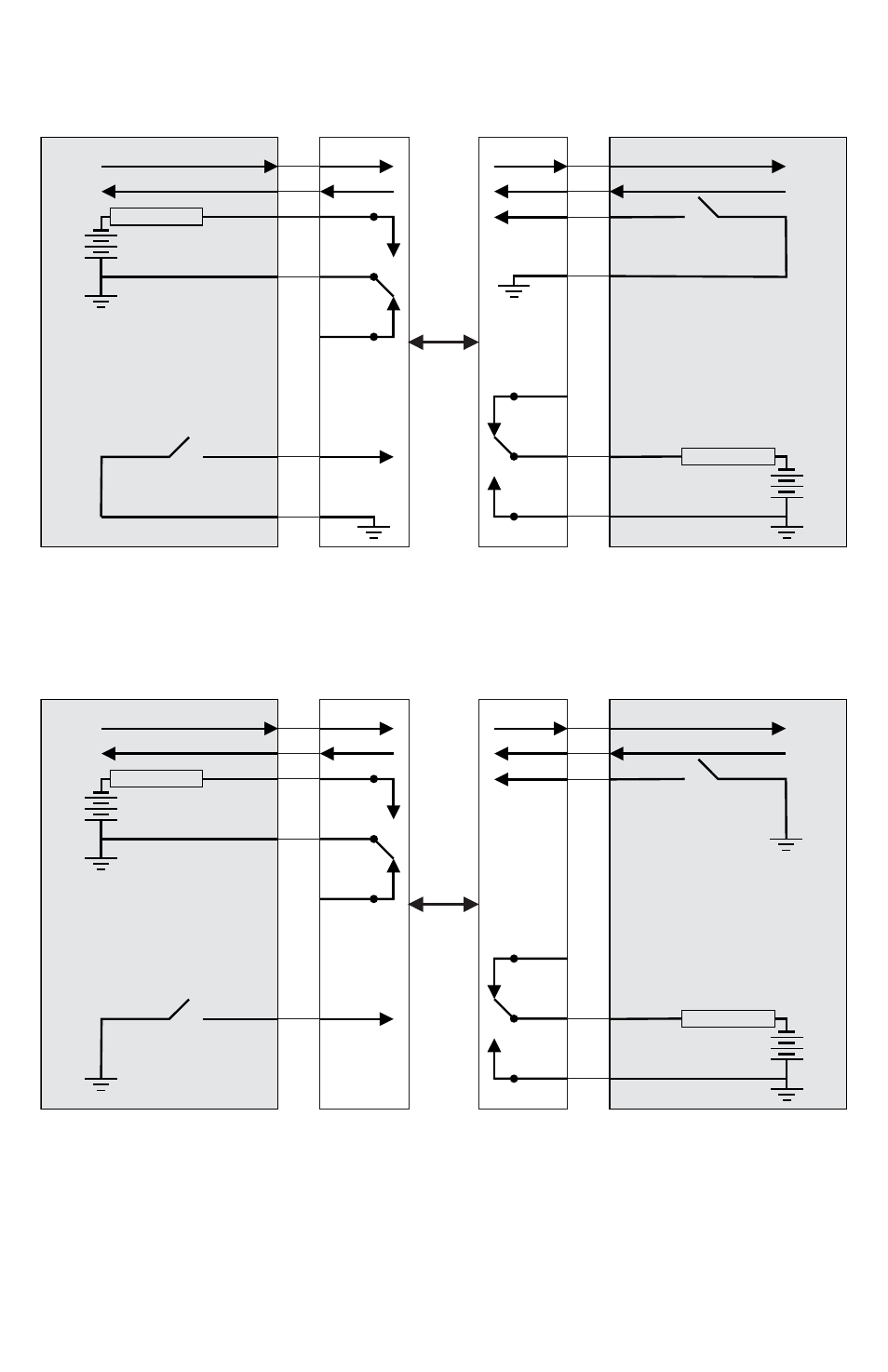FiberPlex TD-7280 User Manual
Page 17

Type IV ‐Type IV uses four leads for supervision signaling: E, M, SB, and SG. During inactivity the E‐lead and the
M‐lead are both open. The PBX indicates an off‐hook condition by connecting the M‐lead to the signal battery
(SB) lead on the tie line equipment side. The router indicates an off‐hook condition by connecting the E‐lead to
the signal ground (SG) lead on the trunk circuit side.
Type V ‐Type V is symmetrical and allows two signaling nodes to be connected back‐to‐back. This is the most
common interface type used outside of North America. Type V uses two leads for supervision signaling: E and
M. During inactivity the E‐lead and the M‐lead are both open. The PBX indicates an off‐hook condition by
connecting the M‐lead to ground on the tie line equipment side. The router indicates an off‐hook condition by
connecting the E‐lead to ground on the trunk circuit side.
Telephone Exchange
FOI(TD)-7280
FOI(TD)-7280
Carrier System
Current Detect
E Lead
SG Lead
M Lead
SB Lead
Voice TX
Voice RX
-48V
Current Detect
E Lead
SG Lead
M Lead
SB Lead
Voice TX
Voice RX
-48V
13&14
1&2
23
22
24
10
11
1&2
13&14
23
22
24
10
11
Fiber
Telephone Exchange
FOI(TD)-7280
FOI(TD)-7280
Carrier System
Current Detect
E Lead
SG Lead
M Lead
Voice TX
Voice RX
-48V
13&14
1&2
23
22
24
11
Current Detect
E Lead
M Lead
SG Lead
Voice TX
Voice RX
-48V
1&2
13&14
23
22
24
11
Fiber
